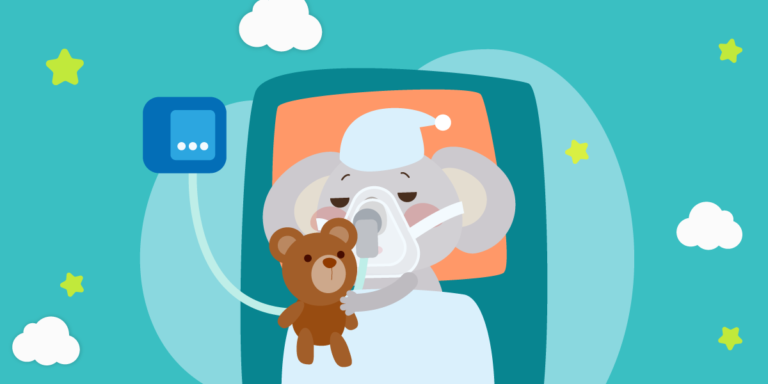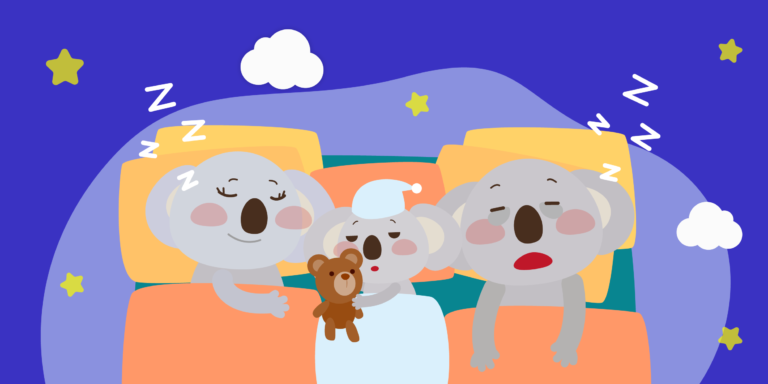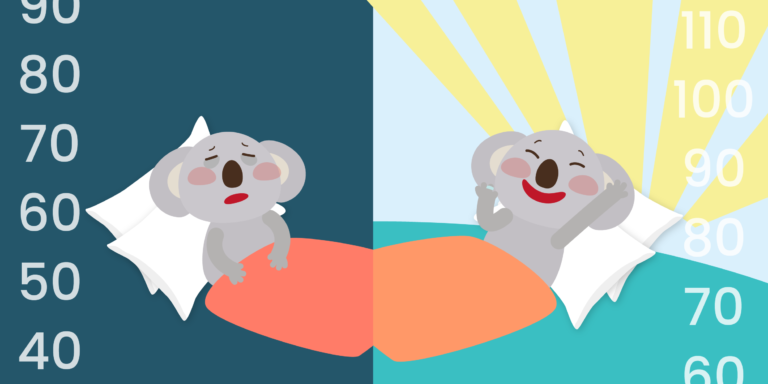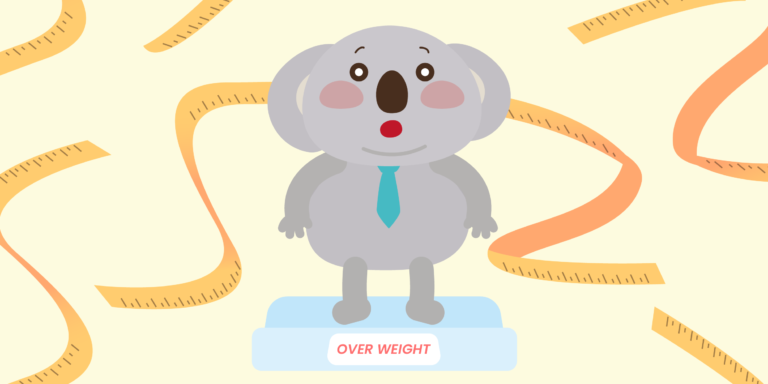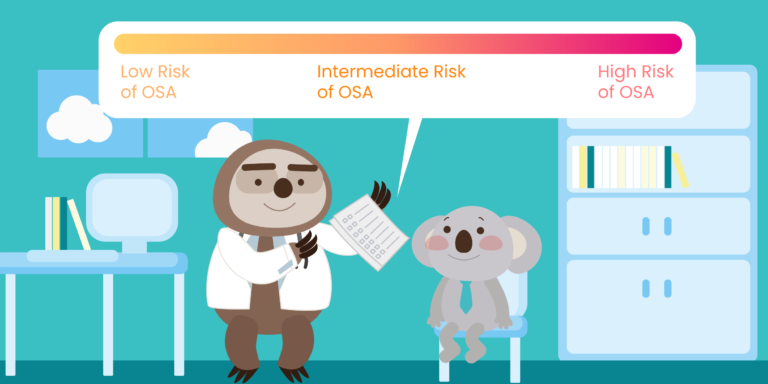What is children’s sleep apnea?
Sleep apnea in children occurs when a child’s breathing is paused repeatedly during sleep due to a partially or fully blocked airway. These paused breathing episodes disturb the child’s sleep and may result in poor sleep quality.
This is a potential cause of certain child behavioral problems or poor sleep habits in children. At school or daycare, children with sleep apnea may be reported to lack energy and have difficulty concentrating in class. At night, children also may have poor sleep patterns, such as night sweats or sleep-talking.
There are two types of children’s sleep apnea, obstructive sleep apnea (OSA) and central sleep apnea (CSA). Most children who have disturbed sleep are usually diagnosed with pediatric OSA. However, there are also some diagnoses of central sleep apnea in children.
We will discuss below how to determine what type of sleep apnea your child might be suffering from and how to get an early child’s sleep apnea diagnosis.
How can parents recognize sleep apnea in children?
The most common and noticeable symptom is snoring. If a child snores frequently throughout the night, it may indicate that the child is not breathing properly during sleep. Because the airway is often closed during sleep, pediatric obstructive sleep apnea leads to fragmented sleep patterns and disrupts deep sleep.
Signs of sleep apnea in children can be identified by other strange sleep patterns, such as:
- Frequent gasping, snorting, coughing, or choking
- Waking up several times during the night
- Bedwetting
- Mouth breathing
- Night sweats
- Sleep talking
- Sleep terror or sleepwalking
Apart from restless sleep, the signs of sleep apnea in children can also be seen during the day. When sleep is interrupted at night, children are more likely to:
- Have difficulty waking up
- Be inattentive
- Fall behind in studies
- Exhibit some behavioral and learning problems
- Be underweight for their age group
- Be hyperactive
Sleep apnea in young children is also associated with being underweight and growth failure (GF). A child has GF if he or she is below the third percentile of their age and sex, meaning that 97% of children of their age are bigger than them.
Pediatric OSA is considered a possible cause of GF below 18 months of age. Children who show signs of GF at an early age should undergo a sleep apnea test before looking into possible treatment for children’s sleep apnea.
In contrast, GF is less common in older children with OSA. Instead, obesity has become the most common cause of sleep apnea in children. The prevalence of obesity in children and adolescents has nearly tripled in the US since 1980, and between 25-45% of children with higher BMI have OSA.
Aside from obesity or being underweight, parents can also look out for some other risk factors for sleep apnea in children, such as:
- Underlying neurological disorders
- Sickle cell anemia
- Cerebral palsy
- Birth defects of the skull or face
- Neuromuscular disease
- Allergies
Children are more likely to have obstructive sleep apnea if their parents suffer from the condition as well. Therefore, if parents or other family members have already shown signs of sleep apnea, it is important to have the children tested for sleep apnea.
Apart from obesity and genetic factors, sleep apnea is more common in children with enlarged tonsils and adenoids, which can be treated surgically after a sleep apnea diagnosis in children.
Importance of Noticing Sleep Apnea in Children with Down Syndrome
Children with underlying neurological disorders, including:
- Down Syndrome
- Prader-Will syndrome
- Ganglioglioma
- Arnold-Chiari malformation
Are at higher risk of pediatric obstructive sleep apnea. Sleep apnea is most commonly found in children with Down Syndrome. According to studies, 53-76% of children with Down syndrome have sleep apnea, especially OSA.
There are certain risk factors that can lead to OSA in a child with Down Syndrome:
- Flattened nasal bridge
- Enlarged tonsils, adenoids, and tongue
- Narrow nose and throat airway
- Weaker muscle tone
Children with DS also tend to have more frequent sinus and upper respiratory infections that cause congestion during sleep and interfere with breathing. This can also worsen OSA symptoms.
Sleep apnea in children with Down Syndrome should be diagnosed and treated as soon as possible, especially at a young age, so that it does not lead to further health and growth-related developmental delays in children with DS. Untreated sleep apnea in DS children may also lead to some of the possible behavioral problems, which include:
- Easily throwing tantrums
- Slow progress in verbal communication
- Difficulty learning new skills
- Refusing to participate in school activities with friends
In the sleep apnea study among DS infants, young children diagnosed with sleep apnea usually have gastroesophageal reflux disease (GERD), congenital heart disease (CHD), or other functional and anatomic gastrointestinal disorders (GI). DS Children with GI conditions are more likely to have sleep apnea than children without these conditions, and the likelihood of dysphagia and CHD occurring together in children with OSA is up to 36% of cases with a predictive accuracy of 71%.
Experts recommend that children with DS be diagnosed in infancy so they can be treated earlier and sleep better to promote their development and reduce the possibility of developing other health disorders. If DS children also have other health disorders listed above, it is best to discuss with their pediatrician whether they should receive treatment for the sleep apnea itself or that directly treats the disorder causing sleep apnea in DS children.
Diagnosing sleep apnea in children
Getting a pediatric sleep apnea test is relatively easy, like an adult’s sleep apnea test. There are two methods for diagnosing sleep apnea in children, namely a home sleep test (HST) and polysomnography (PSG).
Polysomnography test in children
Polysomnography (PSG) is undeniably the gold standard sleep test for children who may have sleep apnea. The child stays overnight at a local sleep clinic and is connected to several wires with sensors. These sensors are typically placed on the child’s head, chest, and limbs to record various organ activities, such as brain wave activity, oxygen levels, breathing patterns, heart rate, and muscle activity.
In the study, “Pediatric Polysomnography: The Patient and Family Perspective,” children and parents who underwent PSG reported a satisfactory experience. However, children younger than 3 years old are reported to have different sleep patterns than usual, which is a possible cause of inaccurate PSG results in children.
The medical journal also discussed the possibility of how PSG may affect children’s mental health. More research is needed to determine the long-term effects of polysomnography in children at a young age. One family reported their child being traumatized by the sleep study. The child found the PSG examination particularly distressing and the parents were concerned that the child might develop PTSD (post-traumatic stress disorder) as a result of the PSG examination. Some parents also reported other complaints, such as:
- The child couldn’t sleep well because the technician had to enter the room frequently
- The child cried for hours
- The child felt uncomfortable because of the wires attached to the body
In this study, parents were allowed to accompany their children to the sleep center and stay overnight, mentioning that the accommodations provided for parents were uncomfortable.
Before the test, parents should make an appointment at the sleep clinic as soon as they discover symptoms of their child’s sleep apnea because it takes time (1-2 months) to get an appointment for the PSG test.
PSG offers detailed results for the diagnosis of sleep apnea in children, but the discomfort and psychological impact on parents and children is still an issue that requires further study.
Children’s home sleep apnea test
Home sleep testing has developed rapidly in recent years and has become a popular alternative to polysomnography (PSG). With a home sleep apnea test (HST), children can easily wear the device at home after getting it from a sleep clinic or certified medical retailer. Most home sleep apnea test kits are wireless and cloud-based, which is very convenient and portable.
There are simple and easier sleep apnea tests you can do in the comfort of your own home, like TipTraQ. PranaQ’s TipTraQ is an at-home sleep apnea test that is very versatile and easy to use.
Just by attaching the device to the child’s fingertip, you can get your child’s sleep apnea test result easily. Since our product is lightweight, your child will not feel a thing and will sleep through the night while the device does its work. Children won’t feel any discomfort of having to move to an unfamiliar place (like a sleep clinic) to sleep and be attached to many wires like PSG.
With our continuous sleep apnea monitoring function, a more accurate and delicate result will be created after a few days of recording your child’s normal sleep behavior at home
Both sleep apnea tests will present you with accurate results for your children’s sleep apnea. It is always best to discuss with your sleep doctor on what works the best for you and your child. If your child is a very nervous sleeper, it is highly recommended to choose an at-home sleep test, like PranaQ’s TipTraQ, but if your child sleeps soundly everywhere, PSG is also a good option.
Healthy children and happy parents!
Sleep apnea in children can be identified even in infants. It is best for parents to get a proper sleep apnea diagnosis for children as soon as they show certain signs of sleep problems or behavioral abnormalities.
With technological developments in the medical field, it’s now easy to test for obstructive sleep apnea in children. Parents no longer have to worry about the hassle of getting diagnosed at a pediatric sleep center. The sooner the sleep test is done, the sooner your child can receive sleep apnea treatment and the better they will sleep. Children with sleep apnea can grow up healthy and happy!
If you are interested in TipTraQ, don’t hesitate to contact us and learn more!
References
- https://jamanetwork.com/journals/jamaotolaryngology/fullarticle/484135
- https://www.soundsleephealth.com/consequences-of-untreated-obstructive-sleep-apnea-in-children/
- https://www.mayoclinic.org/diseases-conditions/pediatric-sleep-apnea/symptoms-causes/syc-20376196
- https://kidshealth.org/en/parents/apnea.html
- https://uptodate.com/contents/adenotonsillectomy-for-obstructive-sleep-apnea-in-children
- https://www.sleepfoundation.org/sleep-apnea/children-and-sleep-apnea
- https://www.yalemedicine.org/conditions/pediatric-obstructive-sleep-apnea
- https://www.cedars-sinai.org/health-library/diseases-and-conditions—pediatrics/o/obstructive-sleep-apnea-in-children.html
- https://www.heart.org/en/news/2021/08/18/kids-who-snore-could-be-at-risk-for-blood-pressure-heart-problems


